Planning and creating video content is by far the most challenging and time-consuming part of the process. Hours are spent brainstorming, scripting, filming, and editing just to produce a single video.
Once you’ve gone through all that effort, why let your content live only on YouTube?
Every video you create can - and should - be repurposed and published on multiple platforms to maximize its reach. Different platforms offer access to unique audiences, each with its own preferences for video format, length, and style. While some platforms may require you to tweak your video format or length, the additional exposure is worth it.
In this article, we’ll cover the best platforms to publish your videos and how to tailor your content for each one.
Top 20 Video Platforms
1. Instagram
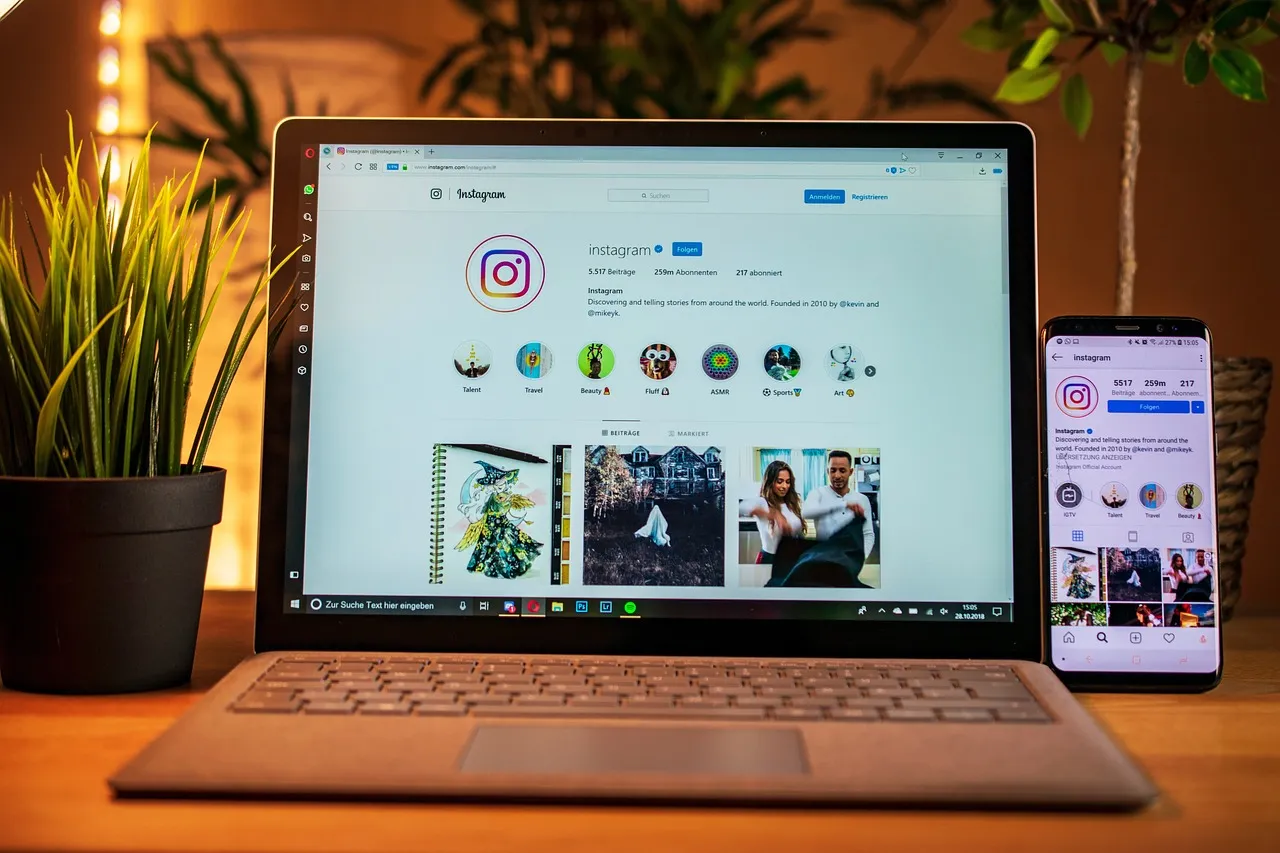
Instagram is a key player when it comes to video content, with tons of options like Stories and Reels that let you connect with a huge audience. It's perfect for getting your videos seen and engaging with your followers on a more personal level.
Instagram, owned by Facebook (now Meta), has over 2 billion active users worldwide. It's especially popular among younger audiences, with the majority of users falling between the ages of 18 and 34, making it a prime platform for reaching a younger demographic.
Audience: Gen Z and Millennials, highly visual and mobile-first users.
Best Formats: Short vertical videos for Reels (up to 60 seconds) and longer horizontal videos for Instagram Stories and IGTV.
What Works Best:
- Quick, engaging content with a focus on lifestyle, trends, or behind-the-scenes moments
- Educational how-tos, motivational clips, and visually appealing storytelling
Tip: Focus on Instagram Reels for maximum reach - Reels have better organic visibility than regular posts.
2. Facebook

Facebook, also owned by Meta, boasts over 2.9 billion active users globally. While it has a broad user base, it’s particularly popular with people aged 25 to 54, making it a great platform for reaching a wide range of age groups, especially adults in their prime spending years.
Audience: Broad, with a slight lean toward older demographics (30+).
Best Formats: Horizontal videos (up to 3 minutes for better reach). Facebook Watch supports longer videos.
What Works Best:
- Viral-style content, entertaining clips, and personal stories
- Short news updates or video podcasts for Facebook Watch
Tip: Add captions - many Facebook users watch videos with the sound off.
3. LinkedIn

LinkedIn, with over 900 million active users, is the go-to platform for professionals, businesses, and B2B content. It's especially popular among users aged 25 to 54, and the platform sees strong engagement from industries like tech, marketing, and finance. Video content on LinkedIn works best when it's educational, thought-provoking, or showcases professional achievements, making it ideal for business-driven video marketing and networking.
Audience: Professionals, B2B marketers, and entrepreneurs.
Best Formats: Horizontal videos (1–3 minutes for feed videos; up to 10 minutes for native uploads).
What Works Best:
- Educational content, industry insights, and thought leadership
- Company culture and behind-the-scenes videos
Tip: Use LinkedIn for professional storytelling or to share key insights from longer YouTube videos.
4. Pinterest

Pinterest, with over 450 million active users, is a visual discovery platform that attracts a wide audience, especially women between the ages of 18 and 44. It’s an excellent platform for sharing how-to videos, product tutorials, and creative inspiration, particularly in niches like DIY, fashion, and home decor. Videos on Pinterest should be short and engaging, with a focus on offering value or solving problems, perfect for tapping into the “ideas” mindset of its users.
Audience: Primarily women, with a strong focus on DIY, lifestyle, and visual inspiration.
Best Formats: Vertical videos (up to 15 seconds recommended).
What Works Best:
- Tutorial-style videos, home organization, fashion tips, and recipe videos
- Inspiring, step-by-step guides with eye-catching visuals
Tip: Add text overlays to make your message clear at a glance.
5. TikTok
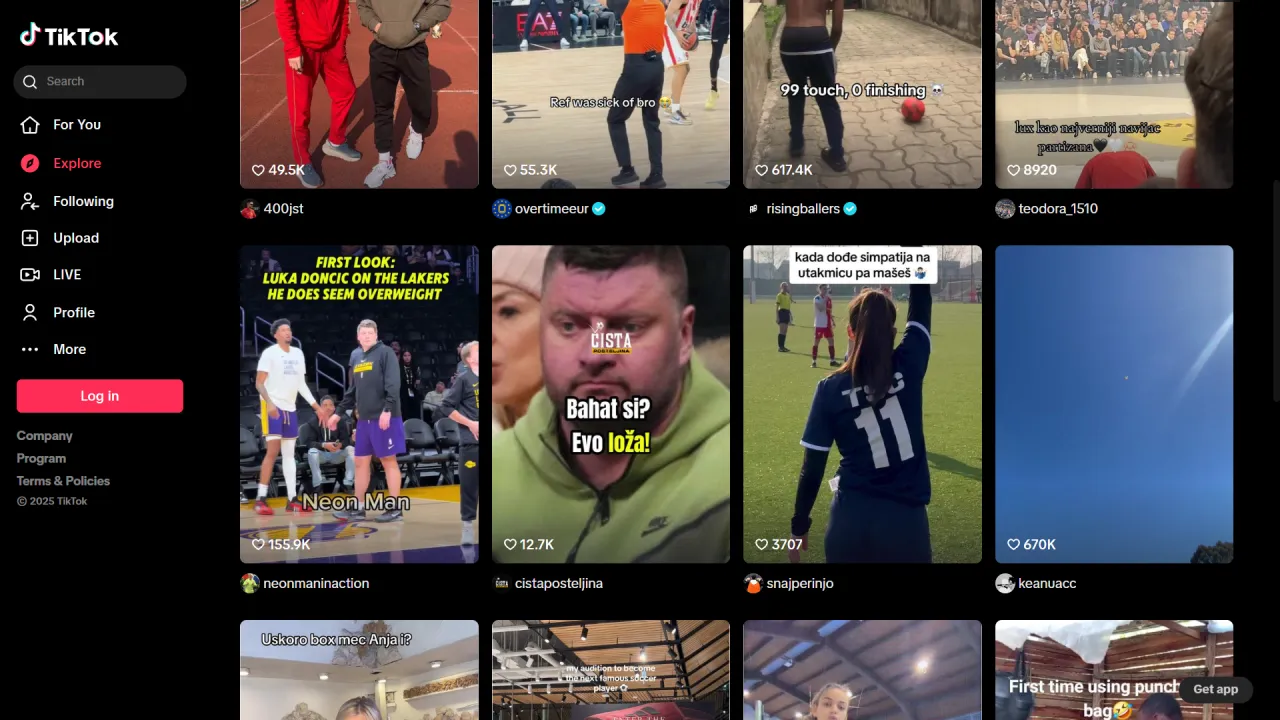
TikTok, with over 1 billion active users, has become a video powerhouse. The platform is dominated by younger users, especially those between the ages of 16 and 24. Short, catchy videos are the key to success on TikTok, with trends, challenges, and viral content taking the lead. It's an ideal space for brands and creators looking to reach Gen Z and Millennial audiences with fun, highly engaging, and often spontaneous video content.
Audience: Gen Z and Millennials.
Best Formats: Vertical videos (15–60 seconds).
What Works Best:
- Fun, trendy, and authentic content
- Challenges, short skits, and life hacks
Tip: Hop on trends quickly to maximize your chances of going viral.
6. X (former Twitter)
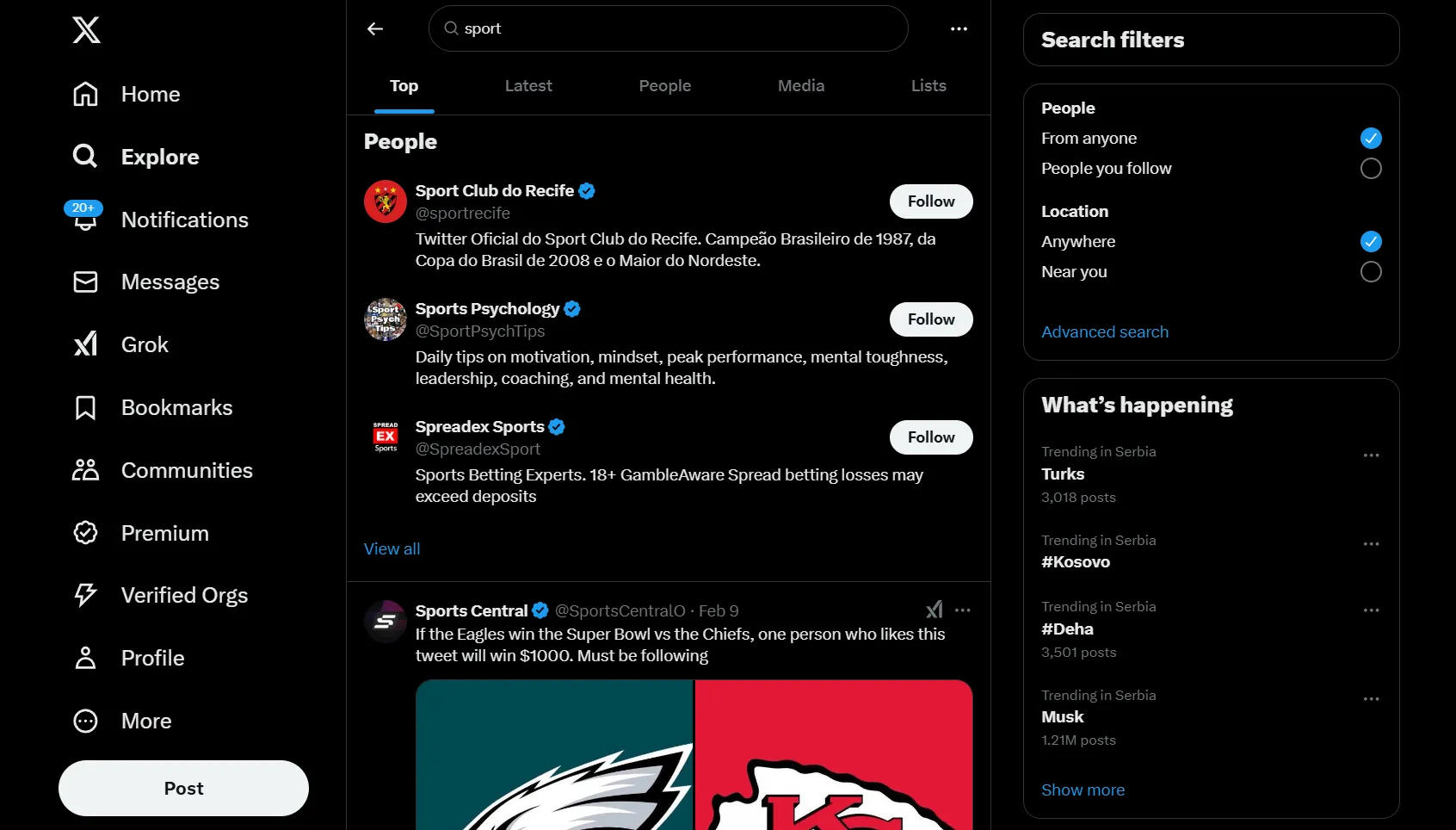
X, with over 450 million active users, is known for its real-time updates and quick, snackable content. While it’s traditionally a text-heavy platform, video content is gaining traction, especially for news updates, viral moments, and quick tutorials. The platform's user base spans a wide range of ages, but it's particularly popular among users aged 18 to 49. Video on X works best when it's timely, attention-grabbing, and easy to consume on the go.
Audience: News junkies, tech enthusiasts, and professionals.
Best Formats: Horizontal videos (up to 2:20 minutes).
What Works Best:
- Short, punchy updates, announcements, and highlights from longer videos
Tip: Use hashtags to boost visibility and engagement.
7. Snapchat

Snapchat, with over 400 million active users, is popular with younger users, especially those aged 13 to 34. The platform’s video content is known for being short, fun, and often ephemeral, with Stories and Snaps taking center stage. Snapchat is ideal for casual, behind-the-scenes content, quick tutorials, and playful, interactive videos, offering opportunities for real-time engagement with a more personal feel.
Audience: Gen Z and younger Millennials.
Best Formats: Vertical videos (up to 10 seconds for Snaps; longer for Stories).
What Works Best:
- Fun, casual, and behind-the-scenes content
- Quick, authentic moments
Tip: Use Snapchat for brand storytelling and product teasers.
8. Reddit
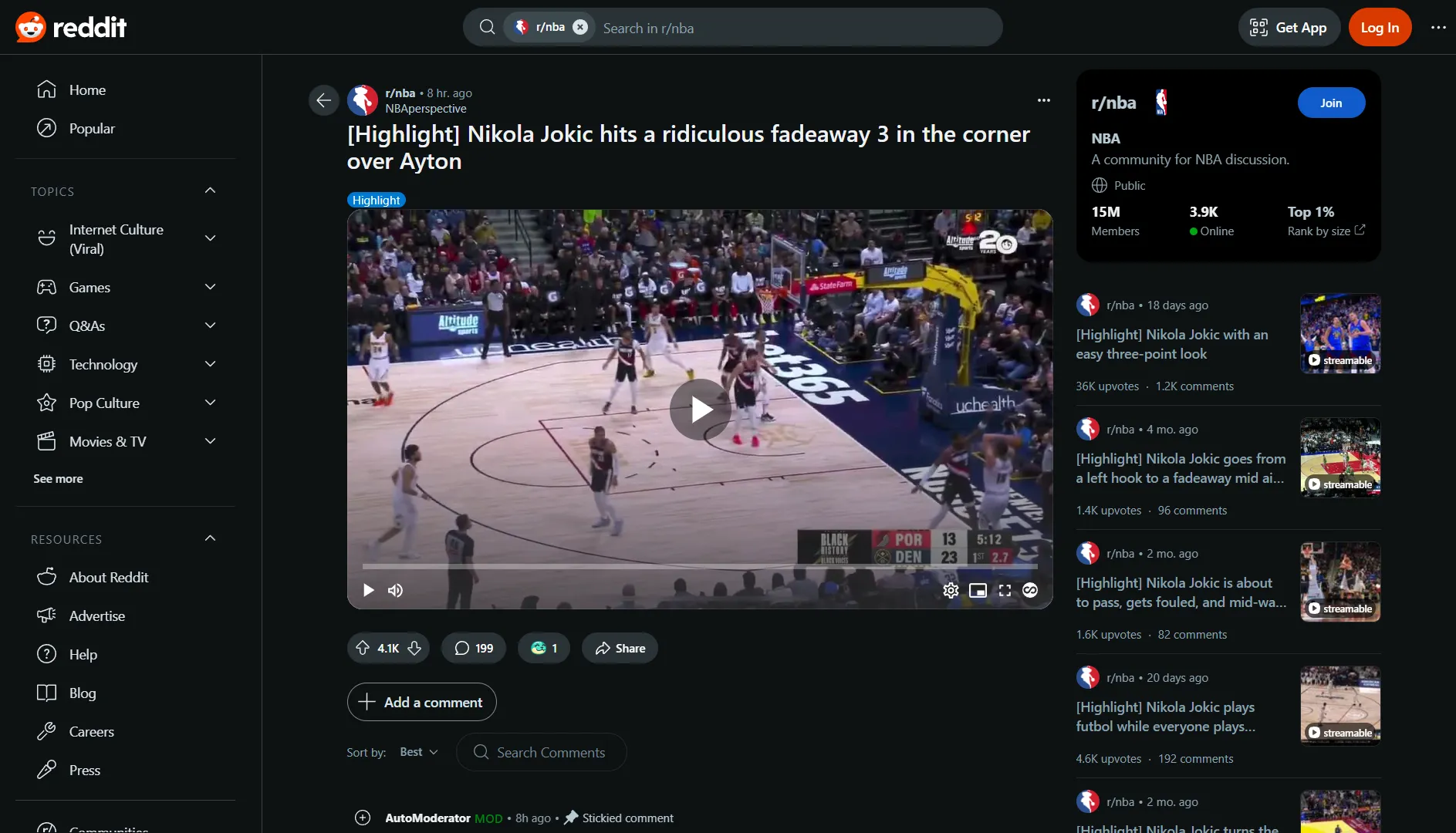
Reddit, with over 430 million active users, is a unique platform where communities (subreddits) drive engagement. While it's traditionally text-based, video content is increasingly popular, especially in subreddits dedicated to niche topics. The platform is most popular among users aged 18 to 29, with a highly engaged audience interested in everything from tech and gaming to personal development. Video content that adds value, sparks discussions, or answers questions works well on Reddit, where authenticity and community-focused content are key.
Audience: Tech-savvy, niche communities.
Best Formats: Horizontal or vertical videos (up to 15 minutes).
What Works Best:
- Niche-specific content that adds value or sparks conversation
- How-tos, product reviews, and explainer videos
Tip: Post in relevant subreddits and engage with the community.
9. Vimeo
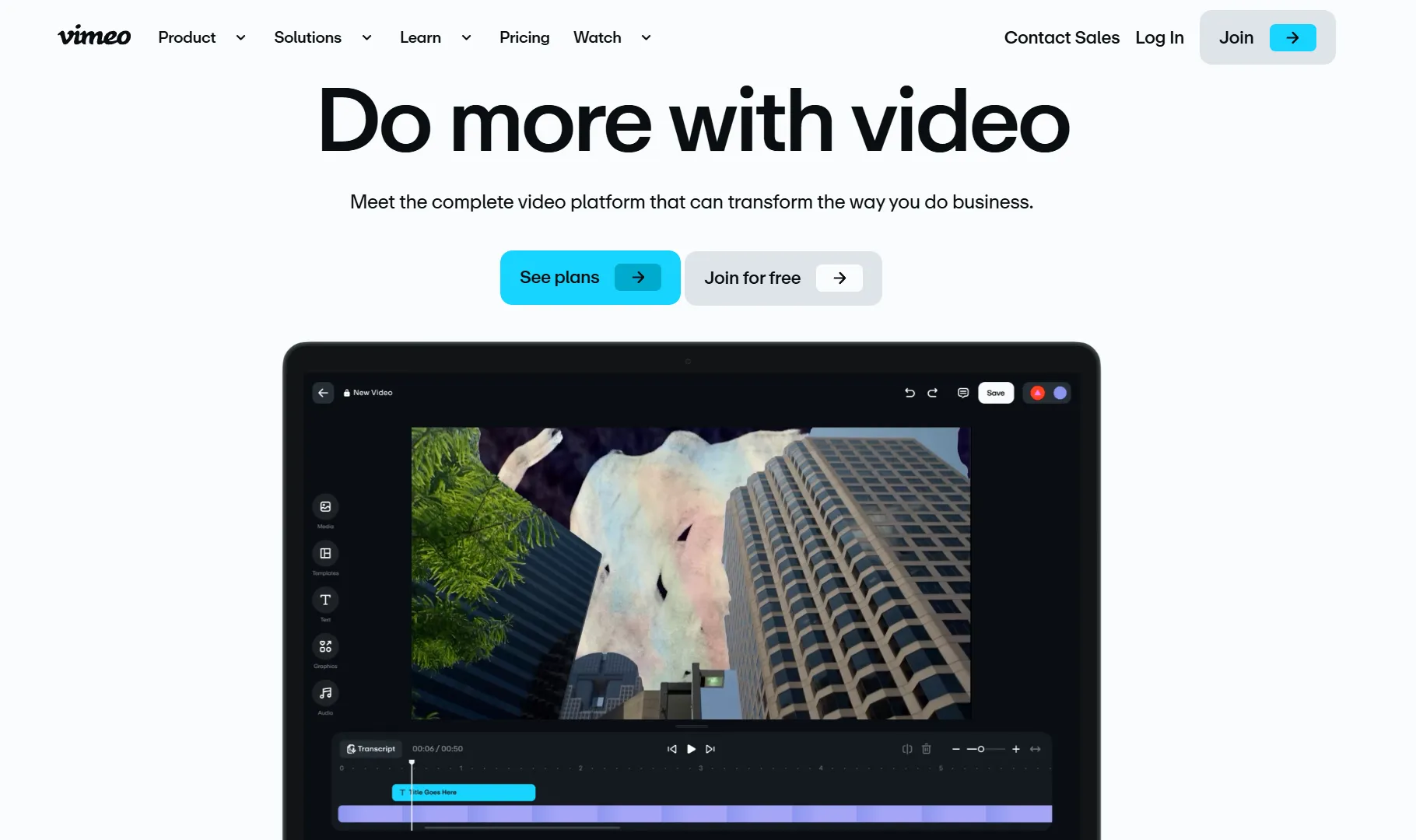
Vimeo is primarily known for being a professional video hosting platform, offering high-quality video hosting and customization options. It allows users to upload and publish videos, but it’s less about viral content and more focused on creative professionals, filmmakers, and businesses. Vimeo's community is more niche, and while it doesn’t have the same massive audience as YouTube, it provides more control over video presentation and monetization options, especially through its subscription-based model for creators.
Audience: Creatives, filmmakers, and professionals.
Best Formats: High-quality horizontal videos (no time limit).
What Works Best:
- Artistic and polished content, such as short films and animation
- B2B marketing and professional showcase videos
Tip: Vimeo offers better privacy controls and is great for embedding on websites.
10. Dailymotion
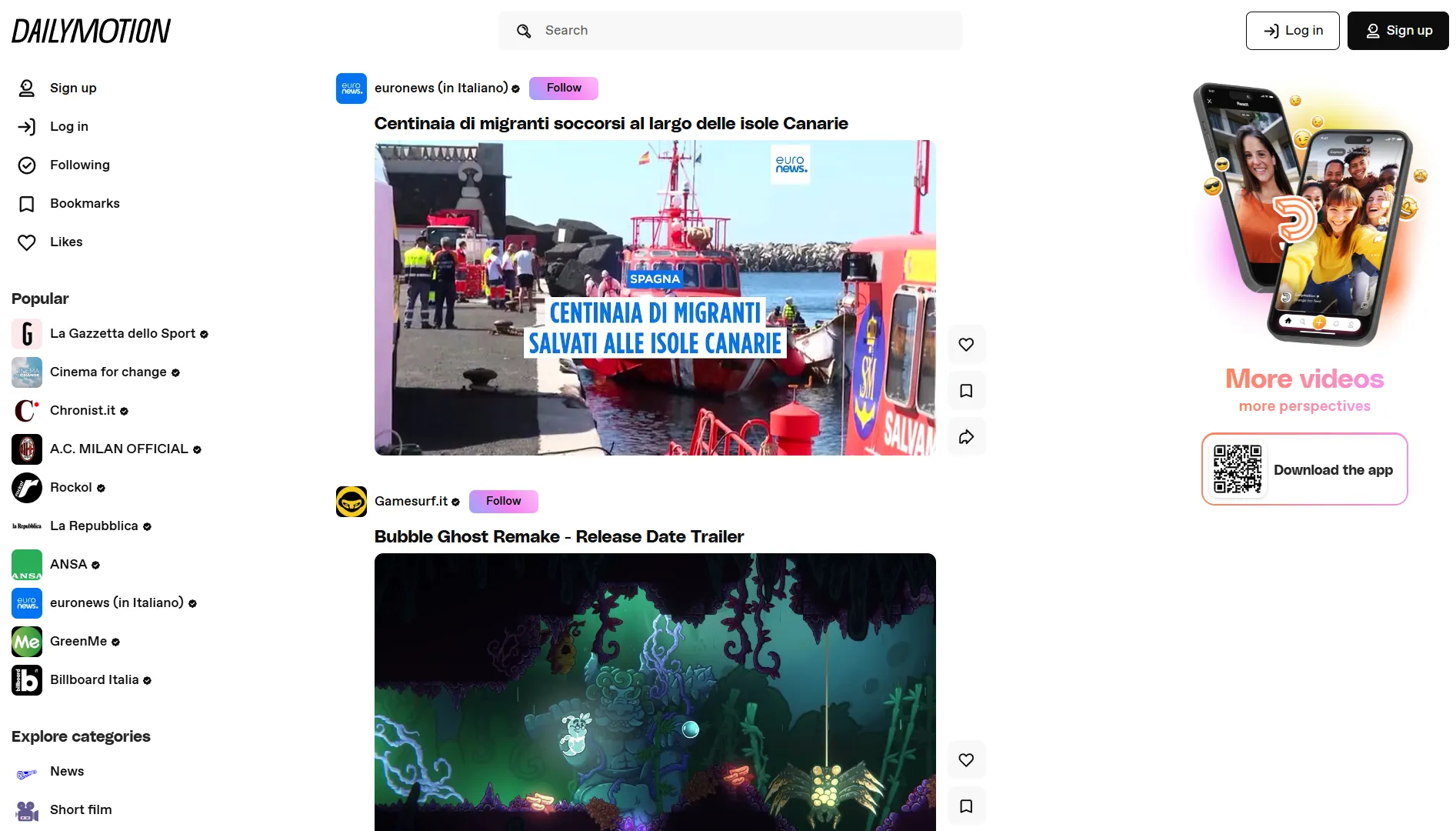
Dailymotion also allows users to upload and publish videos, but it doesn’t have the same level of user interaction or viral potential as YouTube. It’s a video hosting platform like YouTube, but it is less widely used in the U.S. and is more popular in Europe. Dailymotion offers both a monetization option through ads (similar to YouTube) and a content creator program to help users earn revenue. While it doesn't have the same social media-like community features as YouTube, it still provides a platform for creators to publish and share their videos.
Audience: Global users seeking news, entertainment, and viral content.
Best Formats: Horizontal videos (up to 60 minutes).
What Works Best:
- News clips, sports highlights, and entertainment content
- Viral and trending videos
Tip: Dailymotion is great for reaching international viewers.
11. Twitch
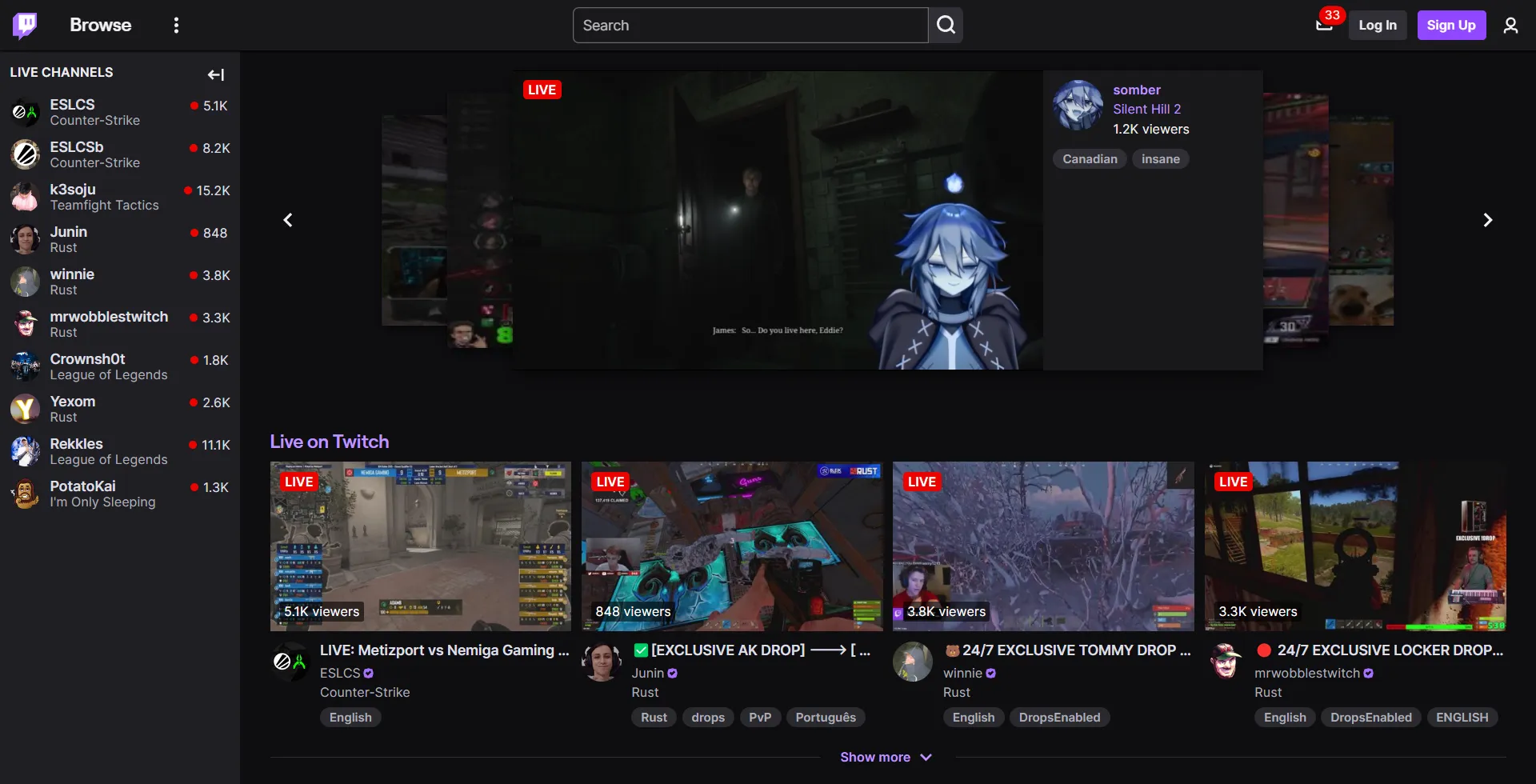
Twitch, with over 140 million active users, is the leading platform for live streaming, particularly in gaming, esports, and creative content.
The platform is especially popular among users aged 18 to 34, with a strong concentration of male users. While Twitch is known for live video content, it also supports video on demand (VOD), allowing streamers to upload and share their recorded live sessions.
Twitch is ideal for creators who want to engage directly with their audience in real time, making it a great platform for interactive and long-form content. Popular video types include gaming streams, Q&A sessions, music performances, and tutorials. Streamers can monetize through ads, subscriptions, and donations, creating a steady income stream.
Audience: Gamers, tech enthusiasts, and Gen Z.
Best Formats: Live streams (up to 48 hours) and on-demand clips.
What Works Best:
- Gaming content, live podcasts, and creative streams
- Art, music production, and coding streams
Tip: Interact with viewers in real time for stronger engagement.
12. Kick
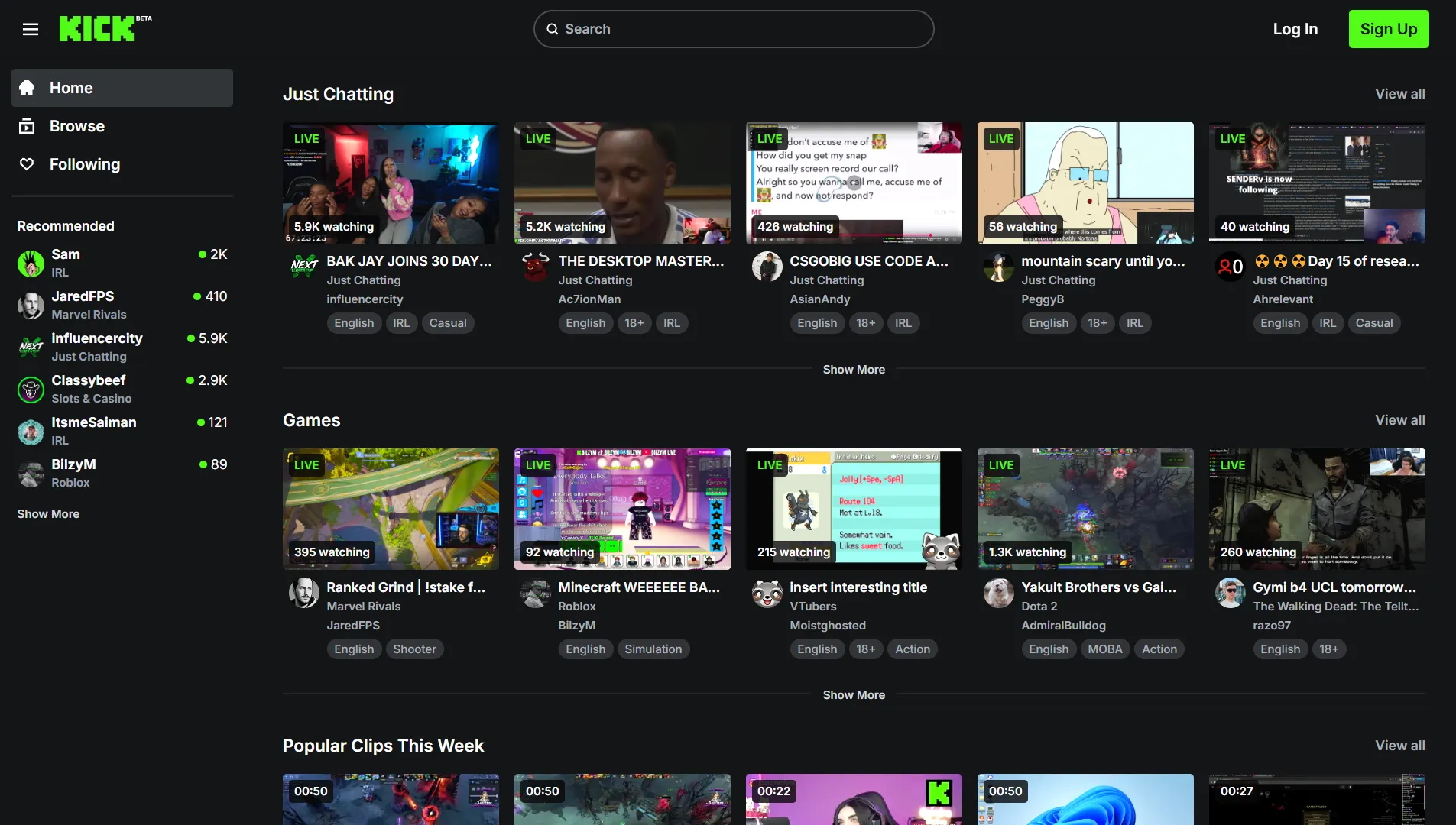
Kick is a newer live streaming platform that's quickly gaining traction, particularly in the gaming space. It’s been positioning itself as a competitor to Twitch, offering creators a more flexible, creator-friendly experience. The platform is growing in popularity, and it has a user base that’s primarily made up of younger users aged 18 to 34, much like Twitch.
Kick allows users to upload and stream video content, with a focus on real-time interaction and community building. While gaming, music, and entertainment are the most popular categories, Kick is still in its early stages and provides an opportunity for creators to establish their presence before the platform becomes saturated. The platform’s appeal lies in its high revenue-sharing options and fewer content restrictions compared to other platforms.
For creators looking to monetize, Kick offers opportunities through subscriptions, sponsorships, and donations, making it a potential income source for those who build a loyal audience. As Kick continues to grow, it’s becoming an attractive option for new streamers and content creators looking to reach a dedicated and engaged audience.
Audience: Gaming and live-streaming enthusiasts.
Best Formats: Live streams.
What Works Best:
- Gaming content and interactive streams
- Community-driven content
Tip: Kick offers a better revenue split for creators compared to Twitch.
13. Utreon
Utreon allows users to upload and publish videos just like YouTube. It’s a video-sharing platform that aims to offer more freedom to creators, with fewer restrictions and a focus on supporting creators' monetization.
Utreon provides the ability to publish and share content across a variety of categories, from gaming and tech to lifestyle and education. Similar to YouTube, users can grow channels, interact with their audience, and earn revenue through ads and donations. Utreon offers more flexibility when it comes to content, making it an attractive alternative for creators looking for a platform with fewer limitations.
Audience: Video creators seeking an alternative to mainstream platforms.
Best Formats: Horizontal videos.
What Works Best:
- Educational content, tech reviews, and niche topics
- Videos that face heavy restrictions on other platforms
Tip: Utreon offers subscription tiers for creators to monetize content and provides a better experience for both creators and viewers.
14. DTube
DTube also allows users to upload and publish videos, much like YouTube, but with a unique twist. DTube is a decentralized platform that operates on blockchain technology, and it focuses on providing users with control over their content and revenue.
Instead of traditional ads, creators earn through cryptocurrency rewards based on views and engagement. The platform is built on IPFS (InterPlanetary File System), meaning that content is stored across decentralized servers. Creators can publish and share their videos, interact with followers, and build an audience, much like YouTube, but with a more community-driven and censorship-resistant approach.
Audience: Privacy-conscious users and blockchain enthusiasts.
Best Formats: Horizontal videos (no specific time limit).
What Works Best:
- Tech content, crypto-related videos, and alternative news
Tip: DTube is a decentralized platform running on blockchain technology, allowing creators to earn cryptocurrency for popular content. There are no ads on the platform.
15. PeerTube
PeerTube is unique because it is a decentralized, open-source platform. Unlike YouTube, where all content is hosted on centralized servers, PeerTube allows anyone to set up their own instance (a server) to host and share videos.
This means creators can either use existing PeerTube instances or create their own, giving them complete control over their content. Users can publish videos, create channels, and interact with viewers, just like on YouTube, but with more flexibility and a focus on decentralization. PeerTube is perfect for creators looking for more freedom and fewer content restrictions, and it is particularly appealing to those who value privacy and decentralization in their content sharing.
Audience: Open-source and privacy-focused communities.
Best Formats: Horizontal videos (no specific time limit).
What Works Best:
- Niche, community-driven content
- Educational and tech-related videos
Tip: PeerTube is a decentralized, federated platform that allows you to host your own instance or join an existing one to share content.
16. Odysee
Odysee gives users the ability to upload and publish videos, similar to YouTube, but with a focus on decentralization and blockchain technology. Odysee operates on the LBRY network, which allows creators to publish videos without the censorship or restrictions often found on traditional platforms.
The platform uses cryptocurrency rewards (LBRY credits) to pay creators based on views, engagement, and content. Creators can upload videos, manage channels, and interact with their audience while earning from their content. Odysee is popular for its emphasis on free speech, offering an alternative to more mainstream platforms, and is particularly appealing to creators who want greater control over their content and monetization.
Audience: Free-speech advocates and blockchain enthusiasts.
Best Formats: Horizontal videos (no specific time limit).
What Works Best:
- Crypto-related, alternative news, and educational content
Tip: Odysee operates on the LBRY blockchain protocol, enabling creators to earn cryptocurrency for their videos and providing a platform with fewer restrictions on content.
17. Nebula
Nebula is a creator-driven streaming platform that offers premium content to subscribers. Unlike YouTube, which is ad-driven, Nebula focuses on content creators who already have established audiences and typically offers ad-free, high-quality videos.
Creators publish their videos on Nebula with the intent of offering exclusive content to their audience, making it a great option for creators looking to monetize their content via subscriptions rather than ads. While Nebula doesn’t have the same massive audience as YouTube, it provides creators with a more sustainable way to earn money by offering content that appeals to a dedicated fanbase.
Audience: Fans of educational content and creators seeking independence from traditional algorithms.
Best Formats: Horizontal videos (typically 10–30 minutes).
What Works Best:
- Documentaries, educational series, and in-depth explainers
Tip: Nebula allows creators to share exclusive content and avoid YouTube's restrictive algorithms, which is great for creators who want to monetize directly from their audience.
18. StoryFire
StoryFire allows users to upload and publish videos, similar to YouTube, but with a specific focus on storytelling and creative content. StoryFire is a platform designed for content creators, writers, and video makers to share their stories and videos.
It allows users to create and publish videos directly on the platform, as well as interact with an engaged audience. StoryFire is especially popular among creators who focus on narratives, and it supports a variety of content types, from scripted videos to vlogs. Creators can earn revenue through a combination of ad sharing and donations. The platform's unique approach makes it an appealing alternative for those who want to combine storytelling with video publishing.
Audience: Storytelling enthusiasts and content creators seeking an alternative to mainstream platforms.
Best Formats: Horizontal videos and written content (up to 15 minutes for most videos).
What Works Best:
- Narrative-driven content, vlogs, and storytelling videos
Tip: StoryFire integrates video and written content, allowing creators to engage with their audience in a more multifaceted way.
19. Playeur
Playeur allows users to upload and publish videos, much like YouTube, but it positions itself as a platform with a focus on indie and alternative content. Playeur is built for creators who want to have more control over their videos and monetize them without the heavy restrictions imposed by larger platforms.
The platform offers options for creators to engage with their audience through comments, likes, and video sharing. Playeur also provides monetization options, including ad revenue and premium content, making it an attractive choice for content creators who want to showcase their videos while maintaining a strong connection with their fanbase.
Audience: Professional video creators and vloggers.
Best Formats: Horizontal videos, no specific time limit.
What Works Best:
- Vlogs, tutorials, and product reviews
Tip: Playeur offers multiple monetization options, including subscriptions and pay-per-view, giving creators more flexibility in how they earn money.
20. Flickr
Flickr, primarily known as a photo-sharing platform, does allow video uploads, but it is not as centered around video content as platforms like YouTube. While it provides a space for users to upload and share short videos (up to 3 minutes long for free accounts), its main focus is on photography and images.
Video features on Flickr are more limited, and the platform's audience is typically photographers, artists, and creatives. It's not the best option for those looking to publish video content regularly or reach a large audience, but it can be useful for creators who want to showcase short video clips alongside their photo portfolios or integrate video into their creative work.
Audience: Photographers and visual storytellers.
Best Formats: Horizontal videos (up to 90 seconds).
What Works Best:
- Behind-the-scenes content, time-lapses, and short creative videos
Tip: Flickr is known for its photo-sharing features, but it also supports video uploads for creative, visual content. It’s ideal for photographers who want to show their work in motion.
Content Pyramid Publishing Strategy
The concept of the Content Pyramid is all about efficiency. Instead of spending time creating both long and short-form content separately, focus on creating a single long-form piece, then repurpose it into multiple smaller pieces. This way, you can maximize your content’s reach without exhausting yourself by producing entirely new content for every platform.
How it works:
- Step 1: Create one comprehensive long-form piece (e.g., a 10–20 minute video, tutorial, or interview)
- Step 2: Break it down into shorter segments for different platforms (e.g., 1–2 minute clips for Instagram, TikTok, or Twitter)
- Step 3: Repurpose key points into written form (such as blog posts, articles, or social media captions)
- Step 4: Reuse the content across various platforms like YouTube, Facebook, LinkedIn, Pinterest, and more to maximize your reach and engagement
Repurposing content in this way not only saves you time but also allows your content to be seen by a broader audience across different types of platforms.
Turn Your Video Into a Blog Post
Did you know you can easily turn your video into a blog post using AI tools? The process used to be simple transcription, but now, with AI-powered tools, you can generate unique, high-quality text based on your video. This allows you to create engaging articles that provide the same information as your video content but in a more text-heavy format, ideal for SEO and Google rankings.
How it works:
- Upload your video to an AI-powered tool that can transcribe and analyze the content
- The AI will summarize the key points and expand on them to create a fully fleshed-out article
- Edit and format the content as needed to fit your blog style and include relevant images or links
- Publish the blog post and cross-promote it alongside your video.
This method lets you repurpose your content in a way that boosts SEO performance while saving time on creating entirely new written content. It’s an easy way to increase your content’s value and reach!